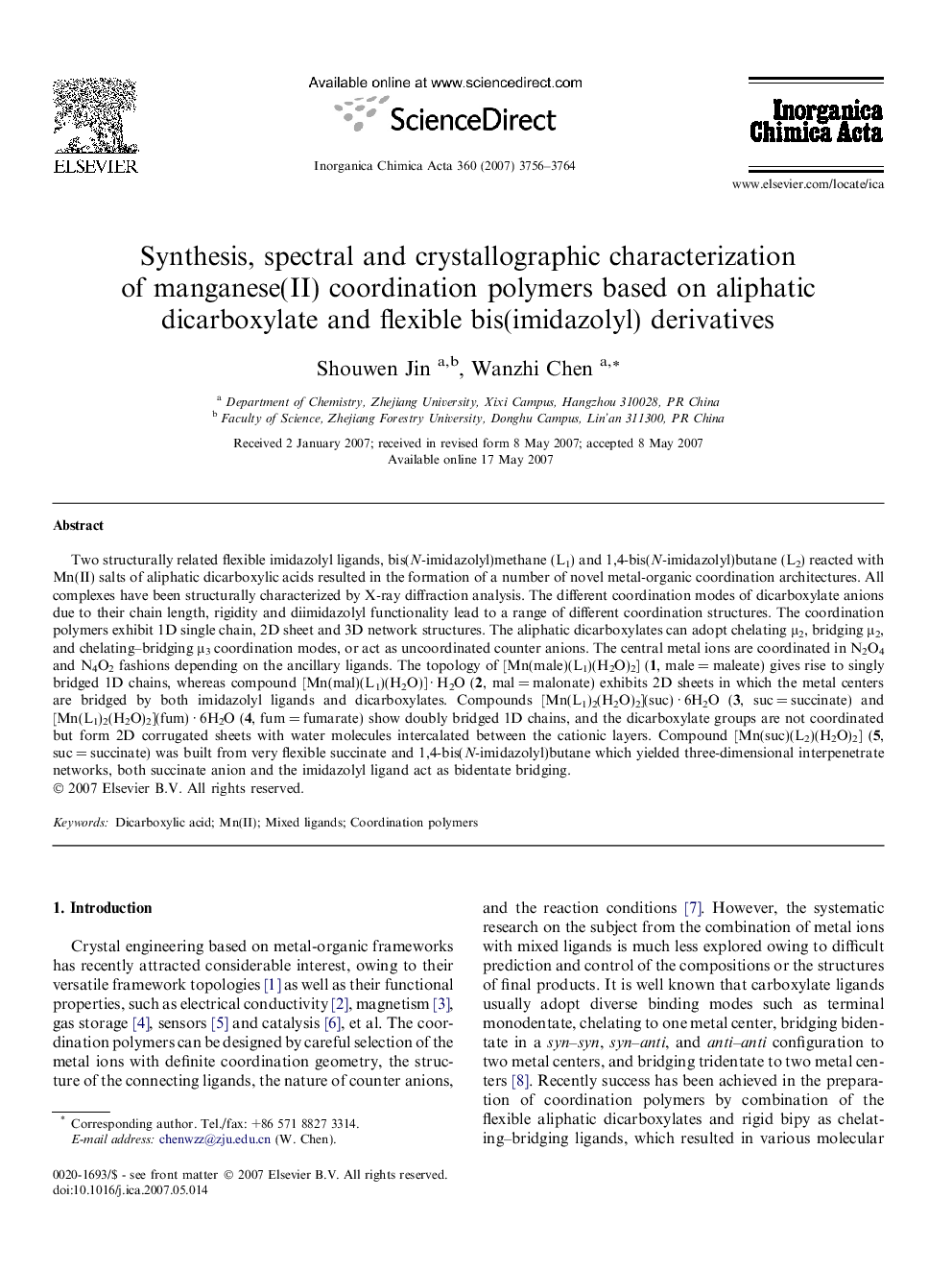| کد مقاله | کد نشریه | سال انتشار | مقاله انگلیسی | نسخه تمام متن |
|---|---|---|---|---|
| 1312739 | 975492 | 2007 | 9 صفحه PDF | دانلود رایگان |

Two structurally related flexible imidazolyl ligands, bis(N-imidazolyl)methane (L1) and 1,4-bis(N-imidazolyl)butane (L2) reacted with Mn(II) salts of aliphatic dicarboxylic acids resulted in the formation of a number of novel metal-organic coordination architectures. All complexes have been structurally characterized by X-ray diffraction analysis. The different coordination modes of dicarboxylate anions due to their chain length, rigidity and diimidazolyl functionality lead to a range of different coordination structures. The coordination polymers exhibit 1D single chain, 2D sheet and 3D network structures. The aliphatic dicarboxylates can adopt chelating μ2, bridging μ2, and chelating–bridging μ3 coordination modes, or act as uncoordinated counter anions. The central metal ions are coordinated in N2O4 and N4O2 fashions depending on the ancillary ligands. The topology of [Mn(male)(L1)(H2O)2] (1, male = maleate) gives rise to singly bridged 1D chains, whereas compound [Mn(mal)(L1)(H2O)] · H2O (2, mal = malonate) exhibits 2D sheets in which the metal centers are bridged by both imidazolyl ligands and dicarboxylates. Compounds [Mn(L1)2(H2O)2](suc) · 6H2O (3, suc = succinate) and [Mn(L1)2(H2O)2](fum) · 6H2O (4, fum = fumarate) show doubly bridged 1D chains, and the dicarboxylate groups are not coordinated but form 2D corrugated sheets with water molecules intercalated between the cationic layers. Compound [Mn(suc)(L2)(H2O)2] (5, suc = succinate) was built from very flexible succinate and 1,4-bis(N-imidazolyl)butane which yielded three-dimensional interpenetrate networks, both succinate anion and the imidazolyl ligand act as bidentate bridging.
Five Mn(II) complexes have been prepared from flexible bis(imidazolyl) and aliphatic dicarboxylate ligands and their structures have been characterized. These coordination polymers exhibit 1D single chain, 2D sheet and 3D network structures. The aliphatic dicarboxylates can adopt chelating μ2, bridging μ2, and chelating–bridging μ3 coordination modes, or act as uncoordinated counter anions.Figure optionsDownload as PowerPoint slide
Journal: Inorganica Chimica Acta - Volume 360, Issue 12, 1 September 2007, Pages 3756–3764